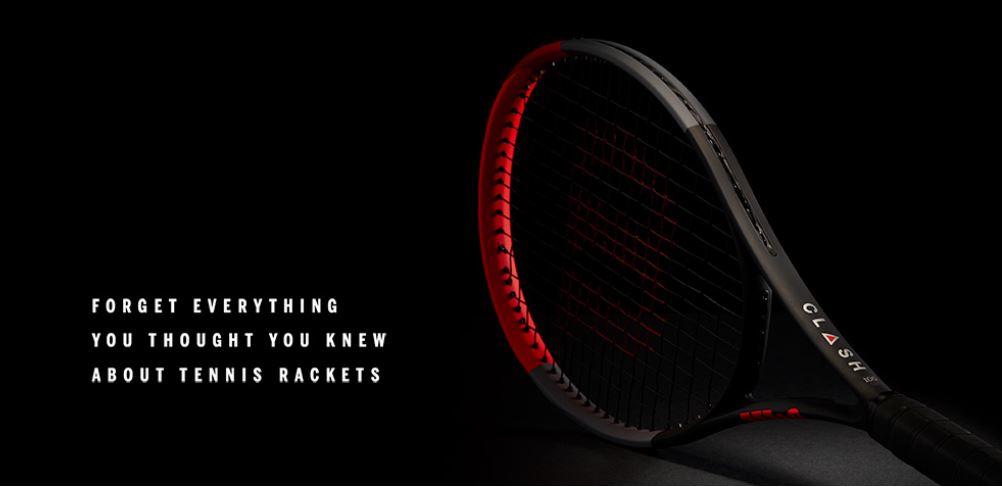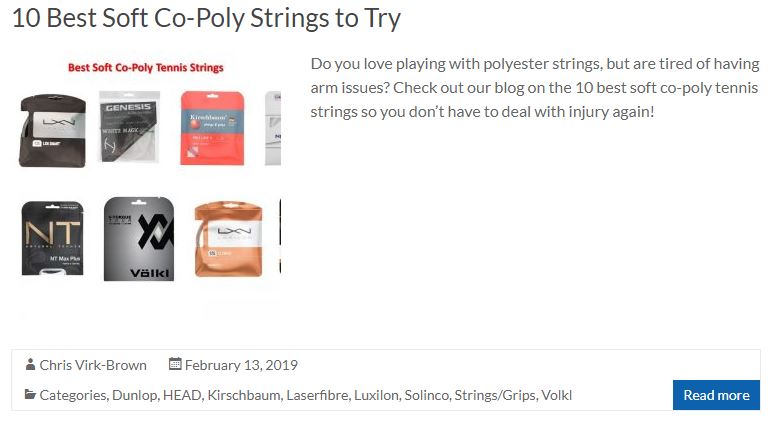
Wilson has been teasing a revolution in the racquet market for awhile now and it has finally arrived. The all new Wilson Clash line is designed by Wilson to counter today’s stiffly built frames with one that is uniquely flexible without losing any power or spin. The Clash 100 Tour, now called the Pro, is the heavier of the two initial versions of the Clash. Like the standard Clash 100, it leverages two key innovations. FreeFlex carbon mapping lays the carbon fiber in new ways, allowing Wilson to create new flex points and bend the frame in directions competing racquet’s can’t. The Clash uses StableSmart frame geometry to balance the unique flexibility with the stability necessary to counter big hitting. With the Clash poised to upend the thinking that power and stiffness have to go hand in hand, I was excited to hit the court with the new Clash 100 Tour.
Groundstrokes
Much like its lighter brother, the Clash 100 Pro’s easy power was immediately evident. The 24.5 mm beam and beefier 11.4 oz strung weight allowed me to generate easy power and penetrating shots off both sides. There was a sizable sweet spot on the 100 square inch head and I felt the Tour had a more consistent power level outside the string bed. The frame was still easy to accelerate even with the extra weight, generating plenty of racquet head speed for putting pace on groundies. For me, the Tour played more erratically than the standard 100. The racquet had a high launch angle and if I didn’t come over the ball enough, the extra mass sent a lot more balls sailing long. The Tour again excelled at medium rally balls but struggled with control when I pressed the gas during rallies. There was plenty of spin off both wings for me, as the racquet’s 16 x 19 pattern is pretty widely spaced. I enjoyed the amount of air I could get under the ball on my backhand and was able to use the extra net clearance to great effect defensively. The Clash 100 Pro was very stable against pace but I was surprised that it didn’t seem dramatically better than the regular 100 despite the extra half ounce of weight (likely because of the more headlight balance). I ended actually preferring the regular 100 off the ground as it felt a bit more controlled and I didn’t feel like I had to sacrifice ant stability or pop.
Volleys & Serves
Even though the beam width and geometry made the Clash 100 Pro look clunky, it played with speed at the net. I had no trouble maneuvering the frame around and quickly flipping it over to volley from both sides. The powerful nature of the racquet allowed me to quickly finish off any high volley and I could effectively drive volleys through the court and into the corners. The wide string spacing sometimes floated volleys more than intended, especially if I wasn’t aggressive enough in my approach. The flex of the racquet provided good ability to bleed pace off the ball and drop short volleys back over the net. The solid stability of the Tour allowed me to fight off hard shots and also helped ensure stretch volleys were solid enough to get back over the net.
[gallery link="none" columns="2" size="medium" ids="12835,12836"]
Serving with the Clash 100 Pro was once again a question of finding balance. There was so much power on tap that I had to make sure not to get too intoxicated by it. Flat serves were most effective when I focused on a relaxed, smooth motion and wasn’t over-hitting. Anything I went for too much on was inevitably going to sail way long. But at 75% swing speed, I found I could serve with reliable pace and court penetration, picking up enough free points to still be dangerous. While not dropping serves on a dime, I did find I could move my serve around the box and move from going down the T to taking serves out wide. Second serves were great again thanks to the easy acceleration and spin friendly string pattern. Kick serves leapt off the court and had enough speed and height to cause plenty of problems. My slice serve benefited from the extra mass of the Tour model, skidding low through the court on the ad side. This proved to be a reliable pattern for me as I could drag opponents wide and then have plenty of court space to target early in the point.
Feel
As with the regular Clash 100, the feel of the Clash 100 Pro was in a category all its own. It played with a unique blend of crisp contact feel with a noticeable flex behind it. The feedback is much closer to modern frames than the flexy sticks of old but I could still much more pocketing on the string bed than any current power focused frame. The ball exits the string bed with the velocity of a much firmer racquet and the sound it made reminded me of hitting a stiff frame with poly strings and no dampener. It was a mental adjustment for me to match the sound and speed of the ball with the sensation of flex the racquet had. I could tell the tech in the Clash went beyond just lowering the RA of the frame as it was flexy, but not in a traditional manner. The frame was exceptionally comfortable, even with a firm polyester string in it. The 100 Pro should be ready to play by a wide variety of players and will offer a much higher degree of comfort than virtually any other option.
Overall
The Wilson Clash line seems poised to potentially disrupt the market of stiff, power tennis frames that have flooded the market today. The Clash 100 Pro offers a bit more power than the standard model while still providing the same spin, stability and one of a kind feel. Players who prefer more mass as well as those with topspin heavy mechanics are poised to get the most benefit from this model. The Wilson Clash 100 Pro rewards modern strokes with easy power, spin, defensive stability, more flex and comfort than virtually anything else being offered today.
 About the Author: Matt Locke formerly served for 3 years as the Junior Programs & Development Coordinator for USTA-Idaho. He is a PTR certified coach and is an active USTA 4.5+ League and Tournament player. He loves Nadal’s determination, but secretly wishes he had Federer’s effortless style.
About the Author: Matt Locke formerly served for 3 years as the Junior Programs & Development Coordinator for USTA-Idaho. He is a PTR certified coach and is an active USTA 4.5+ League and Tournament player. He loves Nadal’s determination, but secretly wishes he had Federer’s effortless style.





















